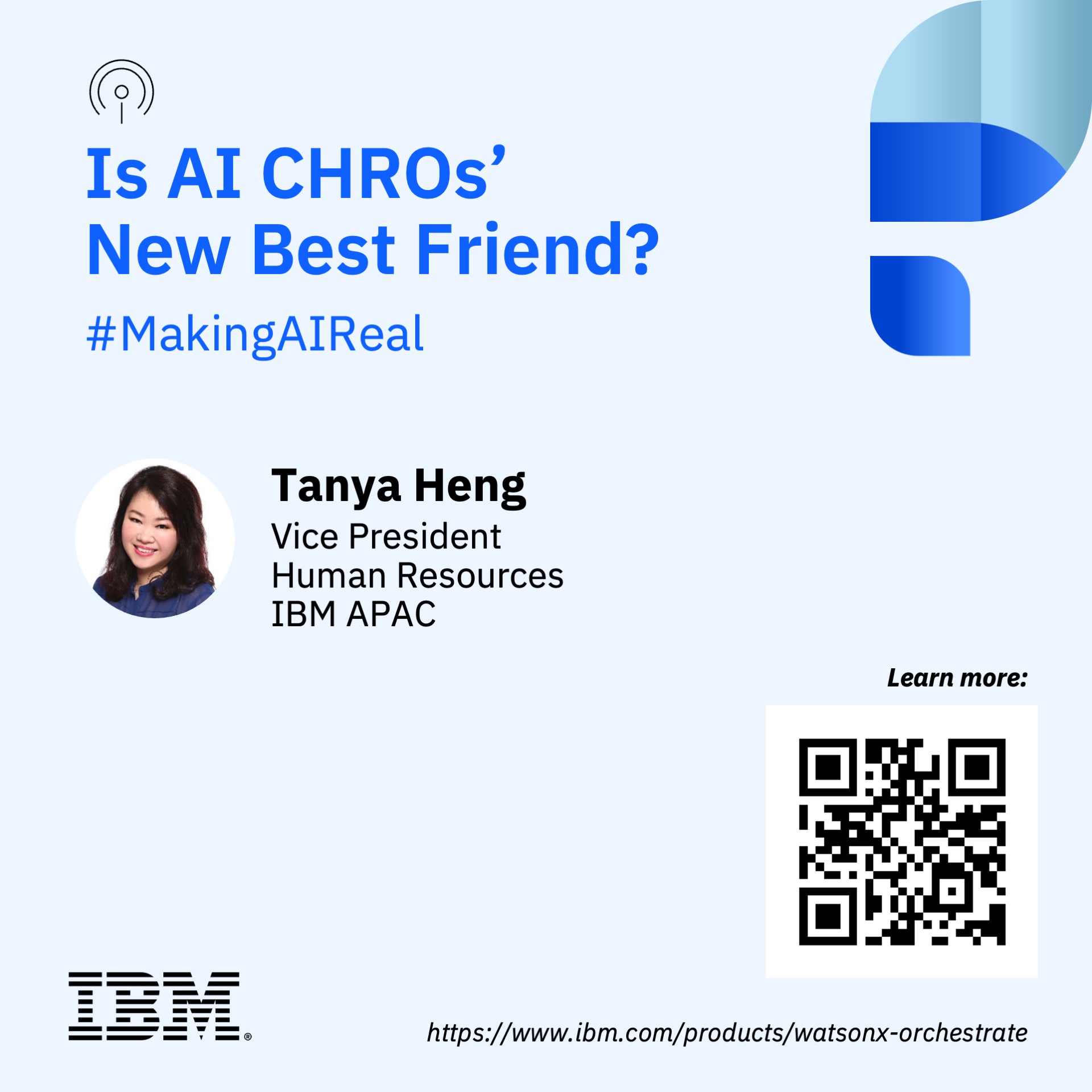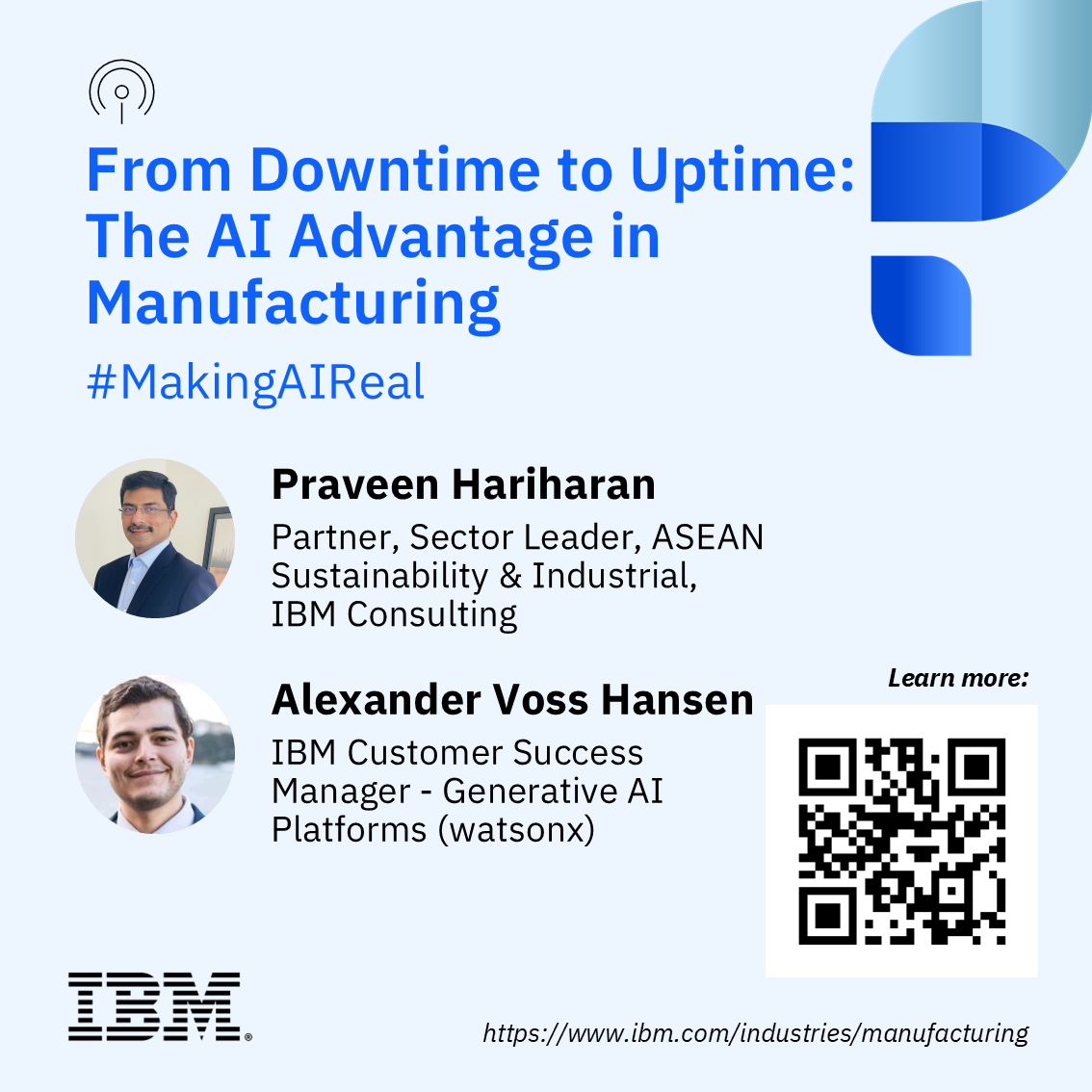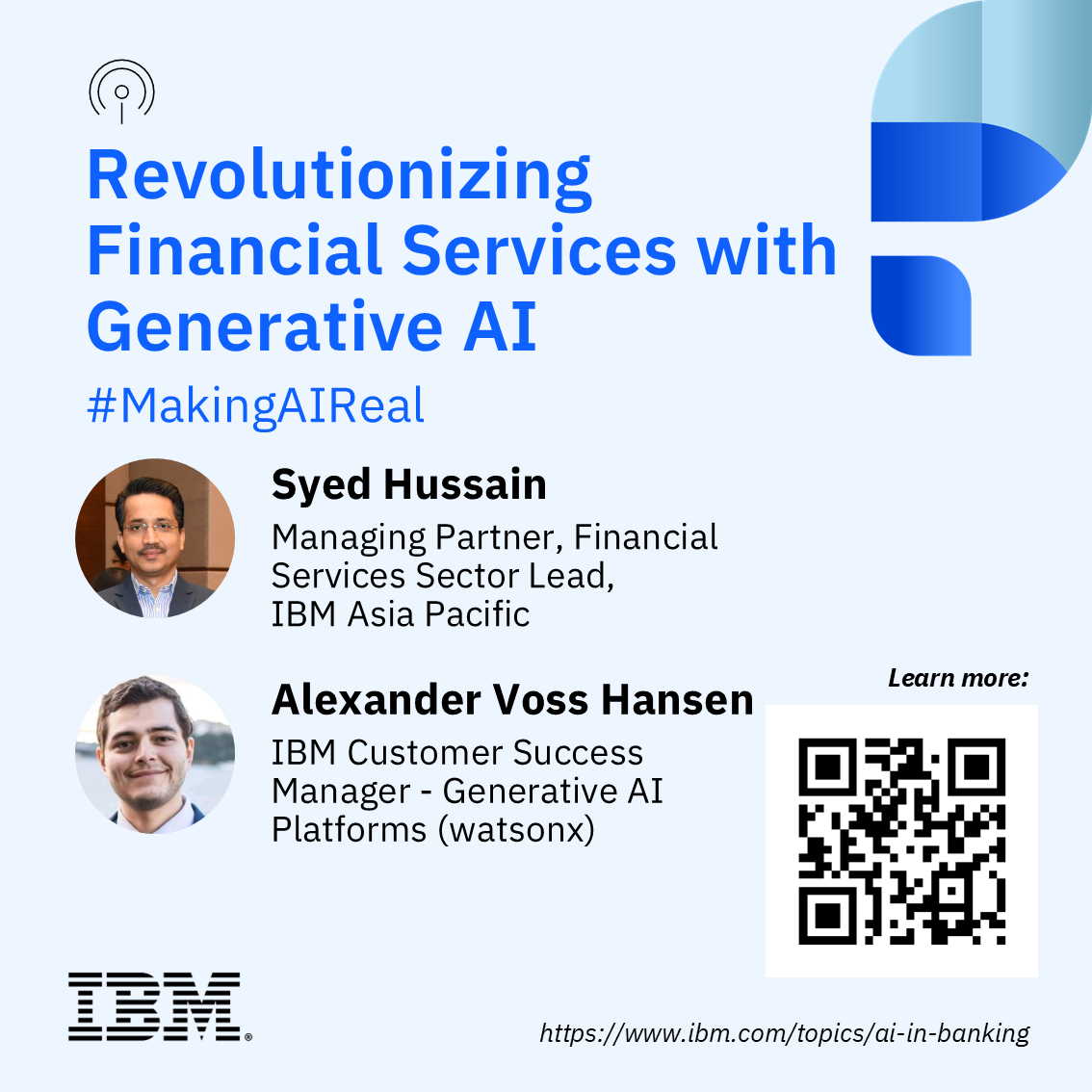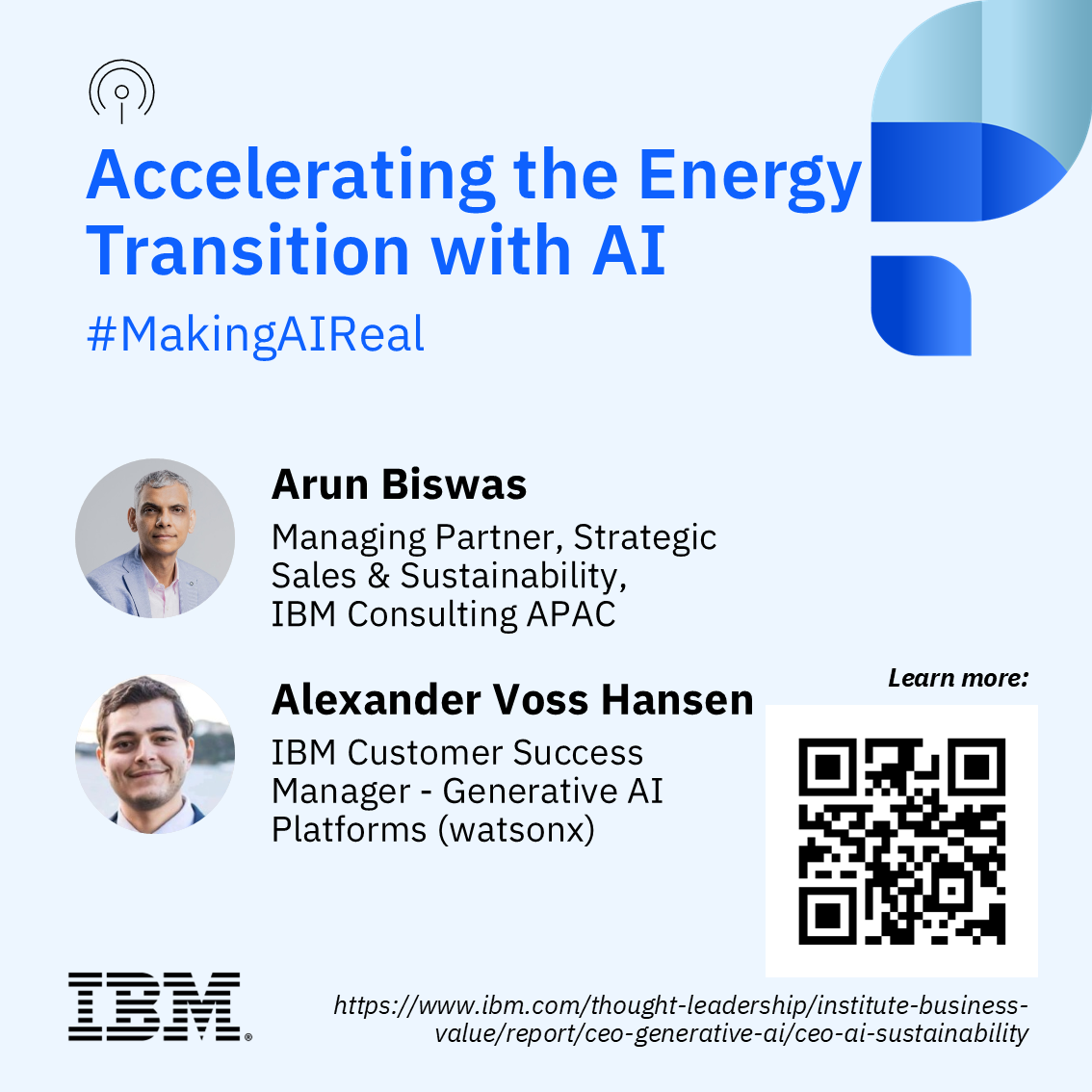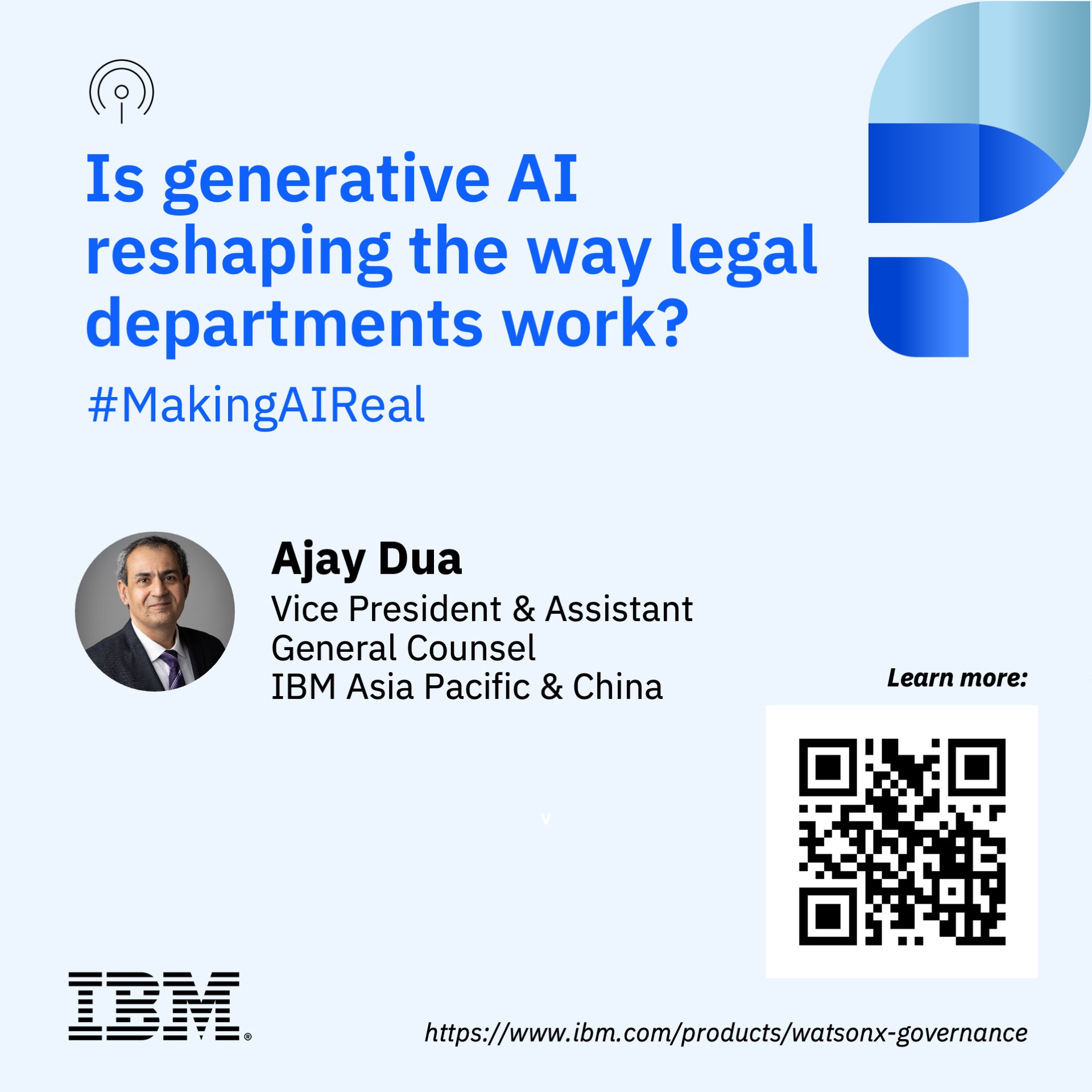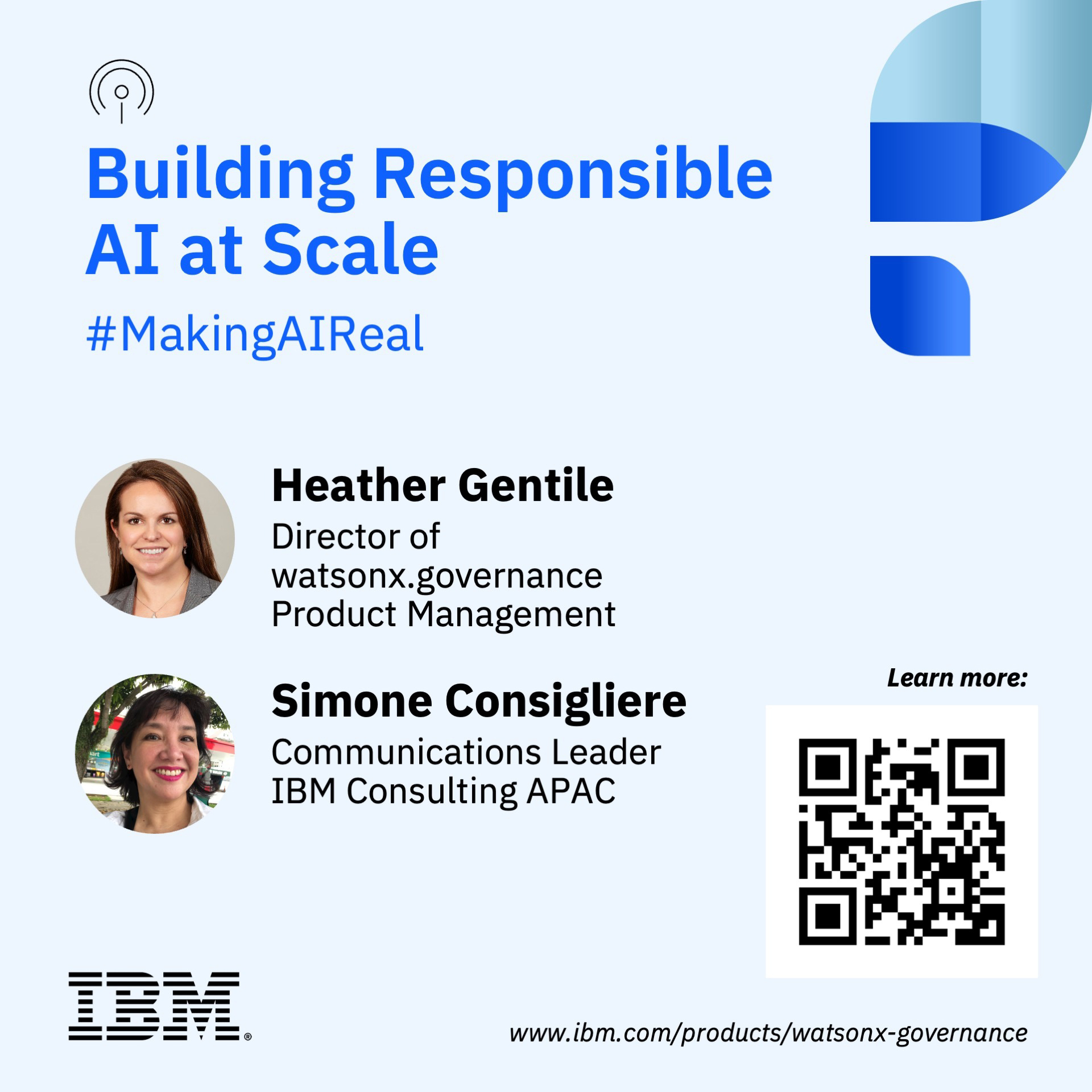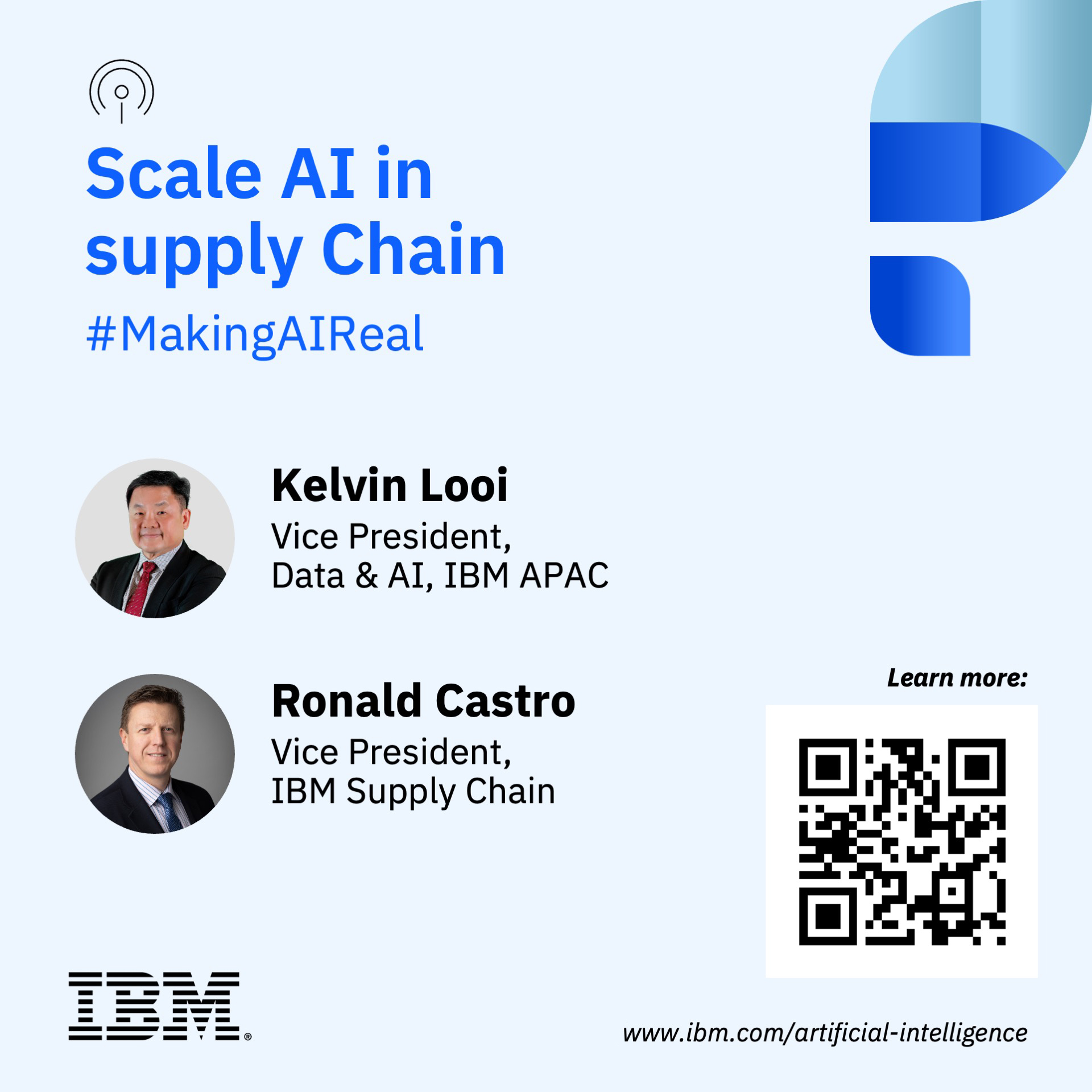Is AI CHROs’ new best friend?
- 0.5
- 1
- 1.25
- 1.5
- 1.75
- 2
Simone Consigliere: Hello everybody and welcome to the Making AI Real podcast series. My name is Simone and with me today is Tanya Heng from HR, IBM Asia Pacific. Welcome, Tanya!
Tanya Heng: Thank you, Simone!
Simone Consigliere: Now, we've heard so much about AI replacing jobs and all these scary stories, and we've also heard about AI augmenting the human intelligence. What are your thoughts on that?
Tanya Heng: So let me start by defining augmented intelligence. It is a subsection of AI machine learning that is developed to enhance human intelligence rather than operate independently, outright replace it. So it's designed to do so by improving human decision-making and, by extension, actions taken in response to improve decisions.
Tanya Heng: Now at IBM, we have been infusing AI and automation throughout the employee life cycle. So far, we have about 280 AI and automation solutions running, supporting 30,000 managers and executives worldwide as their first point of contact for all talent-related items. In addition, we've also used AI automation for processes such as employee transfers, employment verification, promotion process, fraud detection, automated employment checks, and many more. So each of these saves thousands of hours within the organization and empowers human staff to really devote more time to high-value decision-making.
Tanya Heng: Now, if you let me go deeper with some examples. The first example, job transfers. We delivered a new automated simplified process for job transfers globally using our HR Digital Assistant. This is where employees transfer internally and move to a new department and/or a new manager. Now at IBM, most employees transfer to a new manager about once every three years. That adds up to 80,000 employee transfers a year, and managers do those transactions. What we found is before we put in AI automation, managers were spending an average of 15 to 20 minutes on each of these transactions, and 14% of the time, there was an error. They picked either the wrong department to transfer, they picked the wrong effective date, sometimes even less easy to notice, and about 7% of the time, they had to ask for help from an HR generalist. So 7% times 80,000 transfers is about 5,000 transactions a year where our HR generalists are getting pulled in to answer questions or to fix problems instead of doing high-value work like coaching managers and working on leadership development. So what we did, we automated this process with AI and natural language processing such that managers can now transfer an employee through a chatbot that asks all the right questions and checks the work for you. So last year, all our employee transfers happened through the chatbot and we had a zero error rate.
Simone Consigliere: Wow.
Tanya Heng: Because if a manager starts to give the wrong instructions, the AI tells them and then it guides the manager to an accurate, acceptable decision. And that creates, Simone, a huge impact on the employee experience because it means that people get transferred in a timely way without errors or issues. And it also means that our HR generalists can spend their time working on high-value-added work that they like. So that's the transfer process.
Tanya Heng: A second example, promotion process, right? We leveraged the power of IBM AI and automation with Watson Orchestrate to create a new automated and data-driven HR operating model for the promotion process. Intelligent digital workers automate repetitive high-volume off-system processes, really just moving our HR, moving human up the value chain. Now, while managers make promotion decisions, the new model helps gather the data and presents it in a digestible format for managers to consider. And we've seen fantastic results, right? We are looking at 50% less time to complete, 85% process time saved. So this has really been a winner for us.
Simone Consigliere: Well, thanks, Tanya. Very, very insightful. As a follow-up question, what's the buzz around the digital worker and its relationship with AI, and what led to IBM HR being client zero for this?
Tanya Heng: So in the past, the term "digital worker" described a human employee with digital skills. Recently, the market has defined it as a category of software robots which are trained to perform very specific tasks or processes in partnership with their human colleagues. IBM automation powered by AI observes digital workers similarly, defining them as software-based labour that can independently execute meaningful parts of complex end-to-end processes using a range of skills. They leverage AI capabilities like machine learning, computer vision, natural language processing to execute a sequence of tasks within a given workflow. So let me give you an example. A digital accounts payable worker may be able to autonomously perform parts of three traditional job roles - customer service representative, billing agent, cash applicator, or dispute resolver - to complete an entire order-to-cash process. So since digital workers increase the bandwidth of their employees, they have largely been adopted through digital transformation efforts, therefore allowing companies to reallocate their workforce to more strategic stuff. This is an important aspect. Now onto your second question. So let me first set the context. There are three main dynamics affecting the HR function in very real ways. One is cost pressure. HR has to optimize its operations as much as possible. The other is a very high standard for accuracy. You must get your paycheck correct.
Simone Consigliere: Of course.
Tanya Heng: You must get your benefits correct. Onboarding must be perfect. And the third thing which really accelerated during the pandemic is that employees want consumer-grade experience. The experiences we have in our personal lives - shopping, booking a taxi, ordering food - they want to have a similar quality of experiences in the workplace. So in HR at IBM, all three of these pressures were converging on us, and yes, while this is about cost savings, it's also about so much more - speed, satisfaction, optimized inputs leading to optimized outputs. So in short, we are transforming how HR does work, how to make our HR department even more effective with technology, and AI and how IBMers are experiencing it.
Tanya Heng: Over the last 10 years, as we've been evolving the talent workflow into an intelligent life cycle, it has been defined by large-scale technology platforms - HR information systems, talent acquisition systems, travel and expense. So these are taking the HR function out of pen and paper and manual processes into a consolidated data and transaction systems in order to enhance decision-making. So while that continues to be the focus and important, the next generation of intelligent workflows in the talent life cycle are not just data platforms. They are AI-powered, creating fast, customized, frictionless, and accurate experiences, which are extremely beneficial versus having to traverse many different platforms. And departments like HR, like finance are being asked to provide more and more of these customized experiences.
Simone Consigliere: Right. Wonderful. Thank you. That's very, very interesting. I like the whole notion about being more customized, being more client-centric and being more accurate as well. So can you tell us more about how we can maximize productivity with IBM watsonx Orchestrate? You mentioned it a little bit earlier.
Tanya Heng: Yes.
Simone Consigliere: Could you just tell us a little bit more?
Tanya Heng: So you've heard earlier some of my examples, you know, outcomes. Perhaps, Simone, let me talk about one more, and that's AskHR.
Simone Consigliere: Oh, yes.
Tanya Heng: So AskHR is our HR digital assistant, and it offers IBMers a one-stop-shop platform of HR experience, productivity, and engagement. So by leveraging natural language processing and automation, our HR assistant can answer over 2,000 HR questions, perform over 80 different automations through API integrations with different systems, and it can transfer to human HR support when needed.
Tanya Heng: As I speak to our clients and share with them, time needed is often a subject of interest. Platform implementations take a lot of time, but you need that time. With next-gen AI, however, speed to outcome is much faster. It's very compelling. And with our new watsonx portfolio, you don't have to wait for that big bang, is what I tell clients. You can start small and see value very quickly. The watsonx portfolio can be deployed rapidly depending on the solution our clients are looking at. It can be two to four weeks for a new chat automation, four to six weeks for a new RPA, and 60 to 90 days for a new digital employee via Watson Orchestrate. So talk to us.
Simone Consigliere: Yes, and I can attest to the efficacy of AskHR. I've used it many times myself. Tanya, I'm going to put you in a little bit of a hot spot. Based on what you've been sharing so far, one message that's coming across very strongly is that embracing AI needs a balance between embracing the AI innovations as well as the human aspect as well. What are your thoughts on that?
Tanya Heng: With all this change that is coming, I guess the question really is what can we do to prepare humans. I think HR professionals are going to have to play two very important roles here. First, they're going to have to think about how AI might be able to enhance their own jobs and how they are going to develop the skills for it. AI augments human intelligence, and it's so ubiquitous now that it makes sense to me that all HR professionals, regardless of their domain, need to start learning a little bit about AI. Some might decide to code, some might go into how natural language processing works, others might be heading programs and have to think about where to fit AI into the process. And the second really important role for HR is to prepare the rest of the organization. Everybody's job is changing, and I think HR needs to lead the entire organization, from finance to sales, to product development, and really helping those functions think about how will they train people, how will they onboard people differently, how will they forecast what types of roles they need in the future. So HR plays a really critical role in getting all of these in place.
Tanya Heng: Now, I do think that when we talk about AI, some of the narratives is worrying about headcount replacement and lost jobs.
Simone Consigliere: That's right.
Tanya Heng: Some of that is going to happen because technology has an impact on types of work. So the fact is, for 90 to 95% of all of us, myself included, our jobs are going to change. Job changes all the time. 10% or even more of my job might get replaced by AI. Some transactions that I'm doing today will go away, and that does create the question of what I will use that time for. But there's also another 50% or so of my job that will still exist, but I'll be doing it with AI, and then the more important question is, do I have the skills to now do those same things with this technology that I've been doing manually? So right now, there are these big shifts and changes that we all need to prepare for. And going back to the question of how to address AI and elimination of many jobs, how to manage the balance between these two models, I think that some of the culture around supplementing productivity is really about the question - do you know what portions of your workforce are creating incremental value, and what do you want them to do? In HR, coaching is a big skill that we want professionals to have, the ability to give advice, to counsel, to do leadership coaching. That's what we want more of our HR professionals doing and not transactions. And so the question is, how can we help shift them? Do we have a clear point of view on what those high-value skills are?
Simone Consigliere: Thank you so much, Tanya. These are really important points about AI augmenting the value that the human being brings into the job. What an insightful conversation. Thanks again, Tanya.
Tanya Heng: Thanks for having me, Simone!
DESCRIPTION
Making AI Real | Episode 3: Is AI CHROs’ new best friend?
Tune in to our latest podcast from the Making AI Real campaign series featuring Tanya Heng, Vice President – Human Resources, APAC at IBM to learn more about the future of AI in HR.
In this insightful conversation, Tanya shares how AI is augmenting human intelligence, with a whopping 280 AI solutions already in play for the day-to-day activities of employee lifecycle in IBM, benefiting over 30,000 managers across talent-related processes, employee verification, job transfers, and more!
To know more about watsonx Orchestrate, click here: https://www.ibm.com/products/watsonx-orchestrate
Today's Guests

